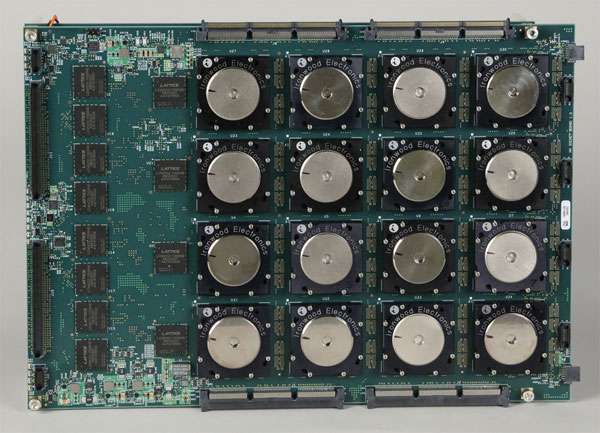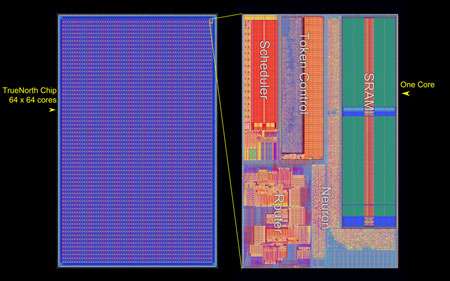August 19, 2015 weblog
TrueNorth chip sign of new possibilities in brain-like computing

IBM is telling the world about something quite ambitious: TrueNorth's neurons could revolutionize system architecture. Dharmendra S. Modha, IBM Fellow, has given us the overview of what TrueNorth is all about in his report in IBM Research.
Six years ago, he said, IBM and university partners began their effort to build a brain-inspired computer.
Phase 0 turned into Phase 1, Phase 2, and Phase 3— from neuroscience to supercomputing to a new architecture, to a new programming language to algorithms, applications, and now, new chip, which is TrueNorth.
He offered some numbers, which are bit daunting for those not accustomed to the "neuromorphic" world of computer research.
Modha said, "we have shrunk the neurosynaptic core by 15-fold in area and 100-fold in power, and have tiled 4,096 cores via an on-chip network to create TrueNorth—with one million neurons and 256 million synapses."
Cade Metz, Wired senior staff writer, went beyond the numbers to describe on Monday what he saw. "Dharmendra Modha walks me to the front of the room so I can see it up close. About the size of a bathroom medicine cabinet, it rests on a table against the wall, and thanks to the translucent plastic on the outside, I can see the computer chips and the circuit boards and the multi-colored lights on the inside. It looks like a prop from a '70s sci-fi movie, but Modha describes it differently. 'You're looking at a small rodent,' he says. He means the brain of a small rodent—or, at least, the digital equivalent."

(The machine at the front of the room is really 48 separate machines, each built around its own TrueNorth processors, Metz wrote.)
Not surprisingly, several websites took to the rodent comparison to report that IBM had come up with a "rat brain"-like chip that might power the phones of tomorrow.
Modha, meanwhile, spelled out the applications that might result. "The architecture can solve a wide class of problems from vision, audition, and multi-sensory fusion."
Making smartphones, as Wired put it, "hyper-smart"? That would be one effect. Modha said, "On one hand, with portable devices: think smart phones, sensor networks, self-driving automobiles, robots, public safety, medical imaging, real-time video analysis, signal processing, olfactory detection, and digital pathology. On the other hand, with synaptic supercomputers: —think multimedia processing on the cloud."
Reporter Mike Murphy in Quartz on Tuesday talked about the technology itself which is turning the corner: "While current chips are excellent at analyzing information in sequential order, the new 'neuromorphic' types of chips Modha's team are working on are better suited to finding patterns in information—like the right side of the brain."
Traditional chips follow instructions, whereas IBM's new chip manages 'spikes'—rather like spikes in electrical activity in an organic brain," Murphy said.
TrueNorth, with all its comparisons, is not a brain but it is a step toward a digital brain. "Let's be clear: we have not built the brain, or any brain," said Modha in the IBM Research report. "We have built a computer that is inspired by the brain. The inputs to and outputs of this computer are spikes. Functionally, it transforms a spatio-temporal stream of input spikes into a spatio-temporal stream of output spikes."
Collaboration with Samsung was critical in gaining access to their advanced 28nm foundry process, he said. This allowed balancing the low active power of the architecture with matching low power of the underlying silicon technology.
He added, "I am immensely grateful to our 200+ collaborators since 2008—spanning eight IBM labs and fabs, five universities, one start-up, and two Department of Energy laboratories. Finally, DARPA's mandate, metrics, and investment were absolutely vital."
More information: www.research.ibm.com/articles/brain-chip.shtml
© 2015 Tech Xplore



















